The Parts Of A Stethoscope: Names & Functions Explained
Are you curious about the parts of a stethoscope and what its functions are?
A stethoscope is an invaluable tool for nurses and other medical professionals. And understanding its parts is important in order to use the device correctly. Knowing what each part of a stethoscope does will help you to use it properly in your practice.

In this article, I’ll cover each part of a stethoscope and what they do. Plus I’ll offer you some tips (from an experienced nurse) on how to use the stethoscope properly.
Keep reading to learn more!
What are the parts of a stethoscope called?
A good stethoscope includes several parts that all work together to help you listen to internal body sounds. Each part has an important role in the functionality of the device. By understanding each part, you’ll be able to use the stethoscope better in your practice.
Here’s a quick overview of the parts of a stethoscope labeled and what each one does:
Headset:
The headset is the upper half of the stethoscope that includes the parts you wear in your ears, allowing you to listen to body sounds. It contains the ear tips, binaural ear tubes, and the binaural spring.
Ear tips:
These are the parts of a stethoscope that go in your ears. The headset ear tips provide a comfortable, proper seal and allow you to hear sounds picked up more clearly. They should also be replaced regularly in order to maintain hygiene.
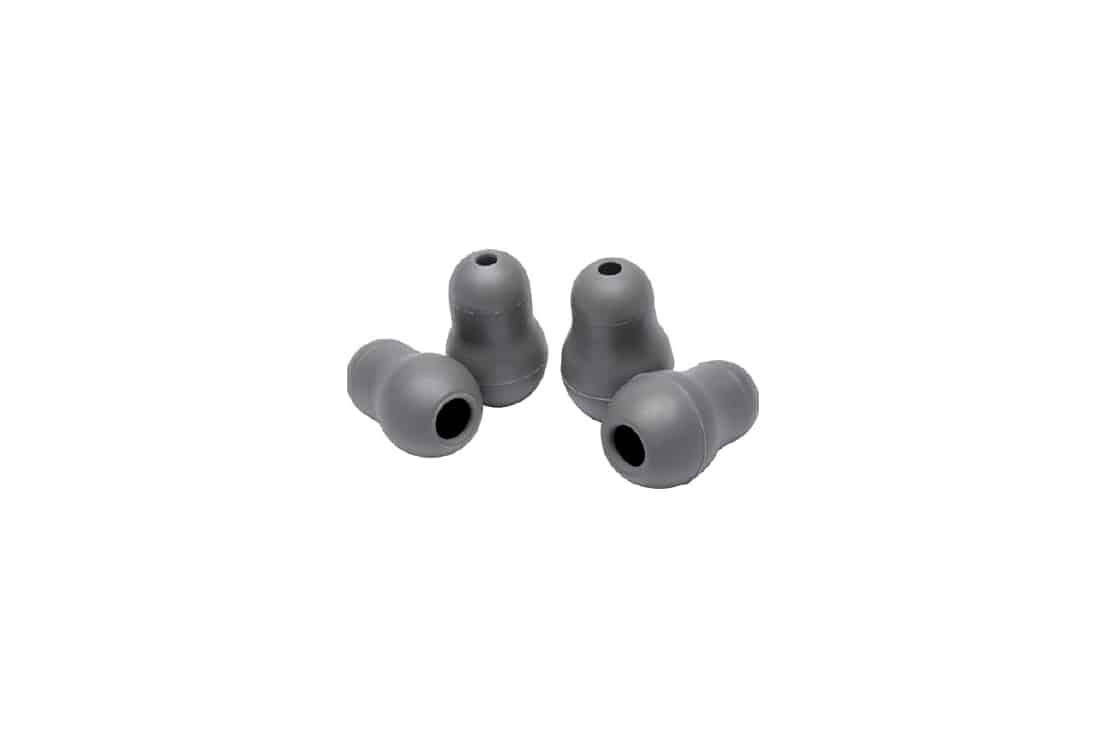
Binaural Ear Tubes:
These parts run from the ear tips down to the tubing of the stethoscope. The stethoscope ear tubes help transmit sound from the diaphragm and bell parts into left and right channels up to your ears.
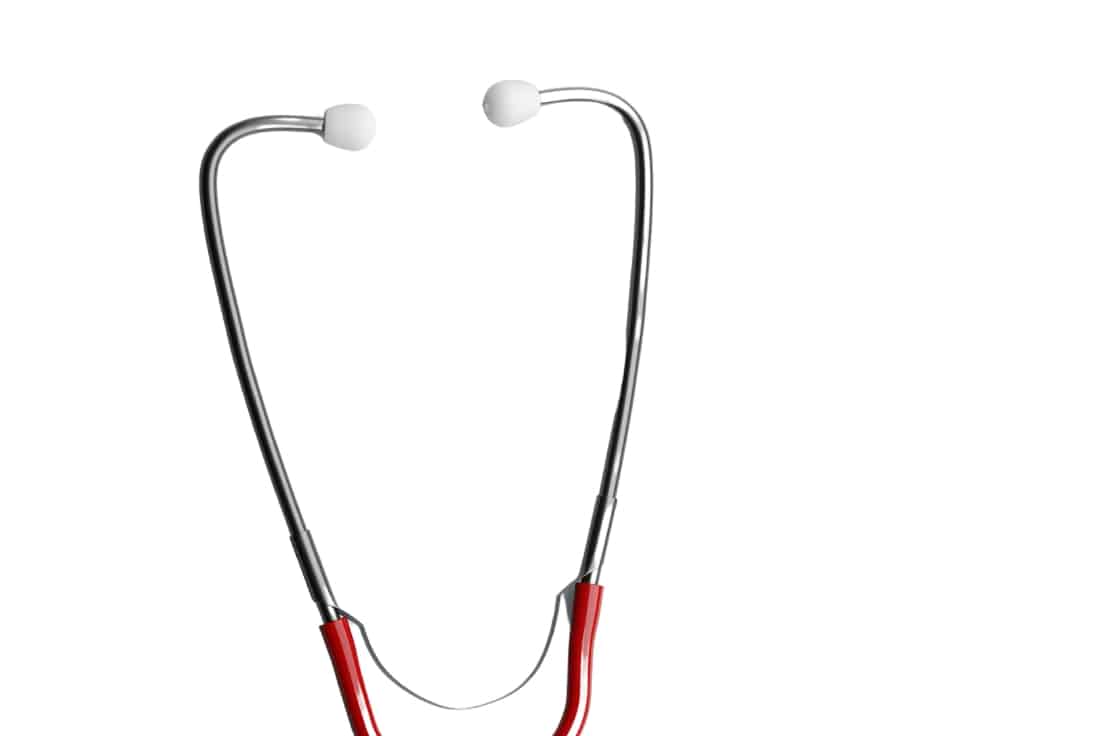
Binaural Spring:
The binaural spring or tension spring offers a steady, firm tension between each ear tube to provide minimal disturbance, stability, and support.
Tubing:
The tubing is the long, flexible part of a stethoscope that connects all parts together. It’s usually made from latex, rubber, or silicone material but can also be made from latex-free PVC tubing. It’s responsible for sound transmission and is available in a variety of colors.
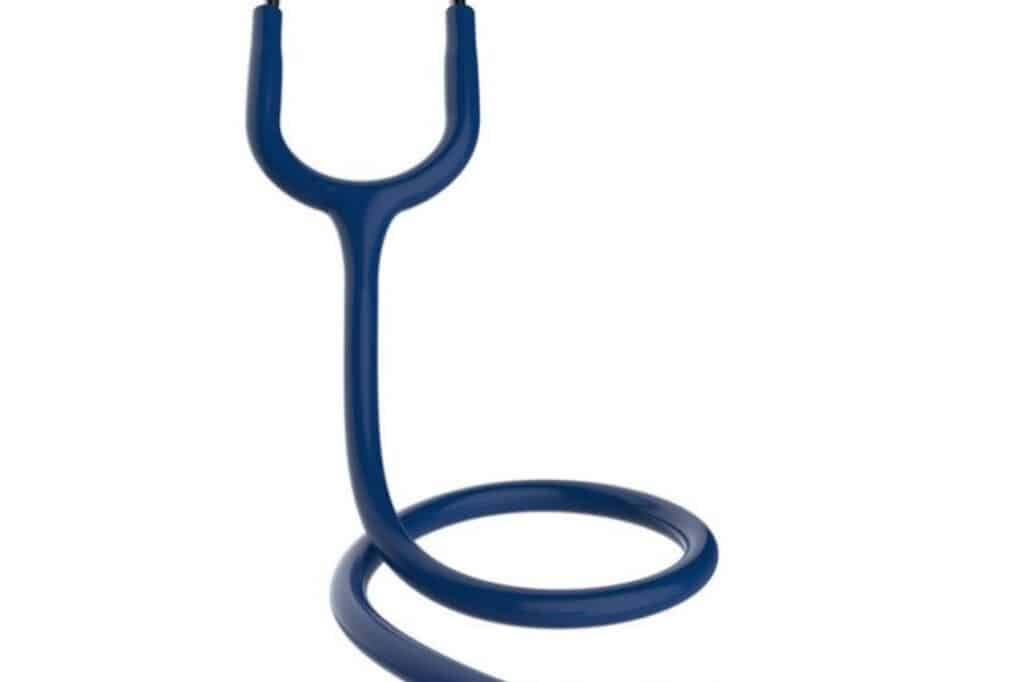
Single vs Double Lumen Tubing:
The lumen of a stethoscope is the part that carries sound from the chest piece to your ears. Some stethoscopes have a single tube, while others have dual lumen tube design. The dual-lumen tubing offers a dual channel within the same (or separate) tube, which provides a more distinct sound to each ear.
Stem:
The stem of the stethoscope is the part that connects the chest piece to the tubing. It’s important to make sure this connected stem is firmly attached to the tubing. The stem splits sound into the binaural and allow you to direct sound from the chest pieces diaphragm and bell parts.

Chestpiece:
The chest piece is the part of a stethoscope that you place directly against the patient’s chest. The non-chill ring prevents the chest piece from becoming cold, making it more comfortable for the patient. It includes two main parts: the diaphragm and the bell.
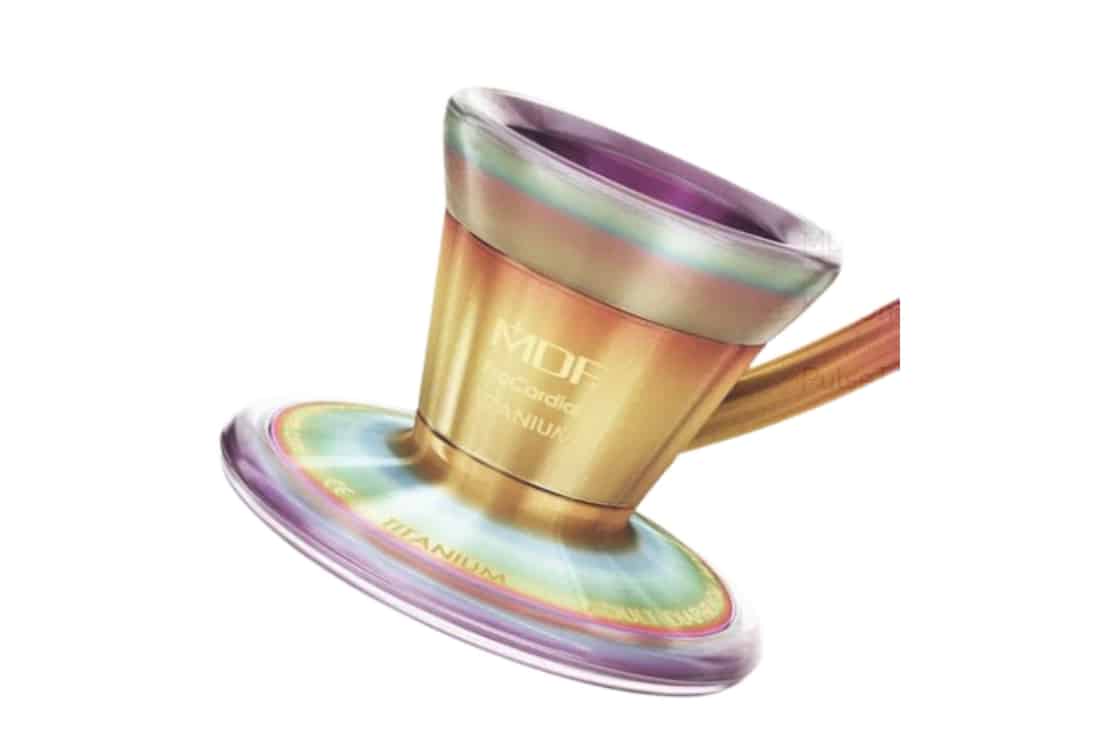
Diaphragm:
This is the larger side of the chest piece, which has a flat surface. It acts as a sound resonator and should be used for listening to higher frequency noises. You can use it to listen to lung sounds, bowel sounds, and some heart sounds.
Bell:
The bell half is the smaller side of the chest piece its narrower range listens to low-frequency sounds. It also acts as a sound resonator. It’s best used for listening to some heart sounds, as well as detecting any abnormal vascular sounds from both the carotid arteries and the aorta.
Now that you understand the parts of a stethoscope and what they do, you can confidently use this device to better monitor your patients’ health.
What is a stethoscope?
A stethoscope is a medical device used to listen to internal body sounds such as heart sounds, breath sounds, and blood flow. It is composed of several parts, including an earpiece, a tube, and a chest piece. It is used by healthcare professionals to diagnose and assess various medical conditions. It is also used to measure blood pressure. The parts of the stethoscope work together to amplify body noises and create a clear sound for the listener.
Types of stethoscopes
There are a variety of stethoscope models available, including size-based, specialty, and advanced stethoscopes.
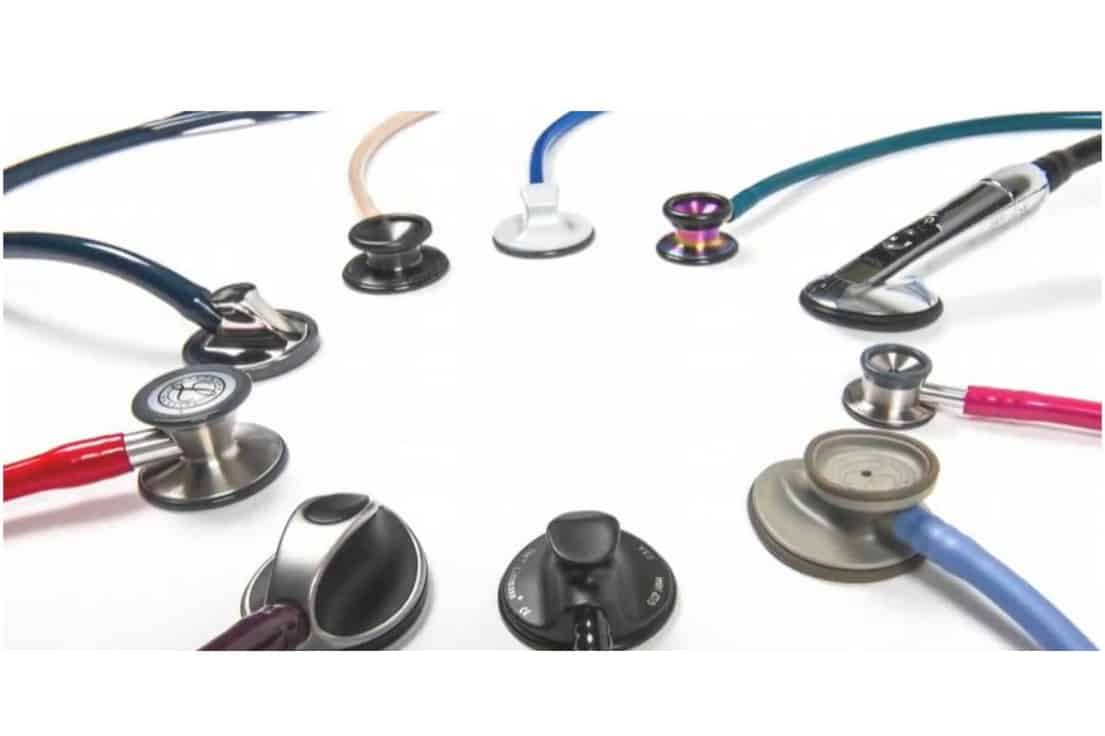
Size-based stethoscopes are designed for pediatric patients and come in a variety of fun colors and prints. If you’re in the market for a stethoscope, you have plenty of options – neonatal, infant, and pediatric models are all available.
For different clinical procedures and patient populations, specialty stethoscopes are designed with the best sound quality to detect specific sounds with improved accuracy. Cardiology, veterinary, doppler, as well as esophageal-specific stethoscopes -all can be found on the market.
Advanced stethoscopes are electronic stethoscopes designed with digital technology. Both amplifying and digital stethoscopes are available to help you better diagnose and treat your patients. Hearing-impaired providers can use advanced stethoscopes with headphones or connect other accessories for a heightened hearing experience. These stethoscopes can also record and store patient information making it easier for you to monitor, track and share patient data.
Other high quality stethoscopes include the Sprague Rappaport Stethoscope which is perfect for medical professionals that see patients across the lifespan. This device is equipped with two detachable heads, allowing for both adult and child care. In addition to the dual head design, it comes with a selection of open bells.
Finally, the lightweight stethoscope is designed with comfortable parts and is light enough to be worn for hours at a time. And it’s usually the best stethoscope for the majority of nurses.
How to choose a stethoscope?
When choosing a stethoscope, it’s important to consider your needs and what type of patient population you will be treating. Is it acoustic or electronic? Do you need a pediatric model? Which size works best for your everyday use?

Here are some things for nurses to consider when buying a medical stethoscope:
Sound quality:
The sound waves of the stethoscope are key in helping you accurately assess your patients. Make sure to get a device that produces clear, crisp sound waves and reduces the outside sound.
Cost:
Your budget should also be taken into consideration when buying a stethoscope. Some models can get pricey, while others are more affordable. An acoustic stethoscope will typically cost less than an electronic stethoscope.
Comfort:
Your ear canal is delicate, and the comfort of the user’s ear tips should be taken into account when selecting a stethoscope. If you plan on wearing your stethoscope throughout the day, it may be more comfortable to select a lightweight option with soft silicone earpieces.
Ease-of-use:
Look for a stethoscope that is straightforward to use and provides a soft, flexible line. Complex models can be difficult to operate, so make sure the one you select will offer convenience as well as accuracy.
Quality:
Opt for a high-quality stethoscope that is durable and long-lasting. A high-quality device will not only last longer but will help you assess and treat your patients accurately.
Stylish:
A fashionable stethoscope is an ideal gift for any nurse. There are a variety of colors, prints, and designs available on the market today. Some stethoscopes come with interchangeable tubes and ear tips, allowing you to customize your look.
Security:
Unfortunately, stethoscopes can be a target for theft in some settings. So consider personalizing your stethoscope with name engraving or simply write your name on it to discourage potential theft. Returning your stethoscope to its case when not in use is also an easy way to keep it safe.
Accessories:
The right accessories can make a big difference in the effectiveness of your stethoscope. From headphones to extension tubes, you can find a variety of accessories on the market to make your device more efficient.
By taking all of these factors into account, you can find a quality stethoscope that will suit your needs and preferences. I recommend taking a look at the best Littmann stethoscope options to find the perfect one for you.
Tips for effectivity using your stethoscope
Using a stethoscope correctly is essential for providing optimal patient care. The human body is complex and it takes a lot of skill to be proficient in listening for subtle changes.

So, here are some tips to help ensure you get the most out of your stethoscope:
- Familiarize yourself with your stethoscope and how it works. Read the instructions or watch videos online to get a better understanding of its features and how to use them.
- If your stethoscope has a tunable diaphragm that enables you to listen to both low and high-frequency sounds on either chest piece side, make sure you adjust it accordingly. Switch or click between the bell and diaphragm by turning the chest piece and clicking it into place via the ball bearing. To detect low-frequency sounds, rest the bell lightly on the patients body. To detect high-frequency sounds, apply firm contact pressure to the diaphragm. (source)
- Ensure that the earpieces of your stethoscope are facing in the same direction.
- Place the earbuds in your ear canals, facing toward your face.
- Position the chest piece on the patient’s skin where you intend to listen.
- Place the stethoscope between your index and middle fingers, gently pressing them together until you no longer hear any friction.
- Take your time when listening. Depending on what internal sounds you’re checking for, it may take a minute or so before you can properly detect them.
By taking the time to properly familiarize yourself with your stethoscope and following these tips, you can ensure that you get the most out of your device and effectively assess your patient’s condition.
How To Clean & Maintain A Stethoscope
As a medical professional, it is important to keep your stethoscope ready for use. Additionally, it is important to clean your stethoscope after every use.
Here are a few tips for cleaning and maintaining your stethoscope:
- Dampen a cloth with rubbing alcohol. Wipe down the stethoscope tubing and ear pieces to remove any dirt or bacteria.
- Regularly check the tubing and ear tips for signs of a tear or wear, and replace them if necessary.
- To keep your stethoscope safe and clean, store it in a secure location that is free from moisture and other contaminants.
Replacement parts are also available for most stethoscopes, such as chest pieces and ear tips. To have a dependable medical instrument on hand, it’s important to replace worn-out stethoscope parts.
Regularly cleaning and maintaining your device is essential if you want the stethoscope to remain in good condition and serve you for years to come.
Frequently Asked Questions
What are the 5 major parts of a stethoscope?
The five major parts include:
- Ear tips
- Aural Tubes
- Tubing
- Stem
- Chestpiece
What is the most important part of a stethoscope?
There isn’t just one part of a stethoscope that is more important than the others. All parts need to be functioning correctly for the device to work effectively. You need a functional chest piece to detect the sounds produced. Non-defective tubing to move the sound to your ear canal. And ear tubes that fit correctly in order to hear the sounds. The combined components create a vital tool for nurses and other healthcare professionals.
What is the small side of the stethoscope called?
The small side of the stethoscope is called the bell. This side is a hollow cup and is used to detect low-frequency sounds. To get the most accurate diagnosis, when using the bell, make sure to press only lightly on the patient.
What are the 3 parts of a stethoscope?
The parts include:
The headset: This is the part that rests in the user’s ears. It includes hollow metal tubes and tension springs. This allows sound to flow efficiently to the ear.
Tubing: This is a flexible tube made of rubber or plastic that allows sound to travel from the chest piece to your ears. Double lumen stethoscopes have two ear tubes that supply individual sound channels to each ear.
Stethoscope chestpiece: This is the part that contacts the patient’s body. It contains two sides; one for lower frequency sounds, the bell, and another for higher frequency sounds, the diaphragm.
Being a nurse or other medical professional requires having the right tools and knowledge to properly assess patient conditions. Stethoscopes are essential and provide practitioners with the ability to listen for and detect patient sounds inside the body. With the right techniques and maintenance, you can use your stethoscope effectively to hear bodily sounds and provide the best care for your patients.







